Last spring, the coronavirus pandemic disrupted everything. UNC Research helped chart a course to the new normal.

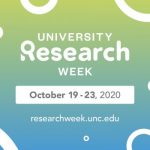
University Research Week, Oct. 19-23, is an annual celebration of Carolina’s research excellence and an effort to increase participation by students, of all levels, in research activity. #UNCResearchWeek
The coronavirus pandemic is far from over — U.S. case counts are rising for the third time since mid-March — but society is adapting. As we adapt, it’s easy to lose sight of how suddenly and thoroughly the coronavirus pandemic disrupted life as we know it.
Just seven months ago, everything was new for the University community.
“There were no guidelines,” said UNC Research Associate Vice Chancellor Andy Johns. “There was an acknowledgement that guidelines would be necessary, community standards would be necessary, but none of that existed yet.”
Here at Carolina, who better than UNC Research to lead the way?
As the 12th largest research university in the United States, UNC-Chapel Hill drives more than $1 billion in annual research activity, bettering lives around the state and across the country. The University houses five major health affairs schools — for medicine, public health, pharmacy, dentistry and nursing — on the main campus, as well as the College of Arts & Sciences, a statewide health care system with five on-campus hospitals and 46 research centers and institutes. Home to some of the best epidemiologists, virologists and public health experts in the world, UNC researchers have helped guide governments, companies and societies through some of the world’s most challenging public health crises: Ebola, AIDS, bird flu and H1N1 to name a few.
While the rest of campus pivoted to remote learning and operations, that wasn’t an option for some researchers. Many experiments must be conducted in highly specialized labs, samples need to be monitored, data collected and progress made. As a result, UNC Research looked to revive its on-campus operations as quickly as possible. While research administration never ceased to stop supporting research activity, by the end of March, research conducted on campus had dropped to around 25% of normal. The Office of the Vice Chancellor for Research, led by Vice Chancellor Terry Magnuson, sought to bring on-campus research back up to 50% capacity by June 1 once the state’s stay-at-home orders were lifted.
Guidelines and standards for keeping people safe and stopping transmission of this new viral threat would need to be grounded in science. Decisions had to be based on data-driven evidence. Regardless of discipline, the scientific method is the universal language of researchers.
“Many work with hazardous materials or pathogens already, and so they’re already used to taking precautions when they’re in their labs doing their work,” Johns said. They were accustomed to containment areas and clean rooms and keeping workspaces sanitary. Doctors, nurses, chemists, biologists, lab technicians and others already understood the importance of facial coverings.
As the mysterious new pandemic raged, people around the world hungry for answers and expertise turned to Carolina, which surpassed all other U.S. universities for coronavirus research in the spring, according to a Microsoft Academic rating system based on how often other researchers cited articles written by the University’s faculty members.
Continuing this critical work while keeping people safe was no easy task.
By July, said Johns, who worked alongside Magnuson to develop the plan, the research enterprise as a whole was back up to speed — labs were back up to 50% capacity and support systems were running smoothly remotely. How? Hard work, long hours and deep wells of resourcefulness. And, on occasion, good luck, like the time Johns was able to get his hands on a shipment of much-needed bleach wipes.
‘A heavy lift’
“One of the benefits of going first is you get to pave your own path,” Johns said. “One of the downsides to going first is that everybody else gets to pick you apart and tell you what you did wrong.”
That’s the nature of the scientific method — ask questions, do background research, build a hypothesis, test, analyze and draw conclusions.
Fortunately, there weren’t many missteps, though “creating guidelines when there really weren’t a lot out there was somewhat of a heavy lift,” said Johns, who was the point person for UNC Research’s guidelines and standards.
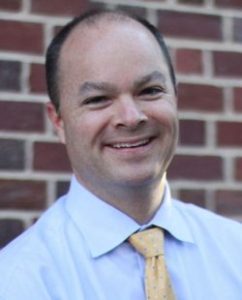
Starting with CDC data and recommendations, Johns and his team sought input from epidemiologists, infectious disease experts and other researchers across the University. Based on what was known about SAR-CoV-2 and how it spread, they homed in on what have since become known as the 3 Ws — wash your hands, wait 6 feet apart and wear a mask.
In the early days, much of the concern centered on surface transmission. Carolina bumped up against the same supply shortage that many consumers may recall. Johns spent countless hours working with people in University procurement to source large quantities of cleaning and disinfecting supplies, hand sanitizer and gloves.
“Getting large quantities of these things in place to be able to disseminate in a very tight market was tough,” he said. “We had to think creatively about leveraging resources elsewhere to help with things like distribution. I even went to campus a few days and made some deliveries myself.”
He remembers getting a shipment of bleach wipes — the kind in canisters — early on and considering them as good as gold. But after that, many weeks passed before he could find anymore, so the University had to shift to alcohol-based wipes.
They also developed screening protocols for individuals, including questions for anyone coming into work. Do you have a fever or headache or cold or flu symptoms?
In less than two weeks, the vice chancellor’s Office of Research had posted its general guidelines for research faculty, staff and students working on campus. Meanwhile, the office charged different research units with guiding day-to-day operations.
“We put a lot of trust and responsibility in our research deans locally in each school because they understand their facilities better than anyone,” Johns said. “We asked each of their staff, including the facilities managers at some of the schools, to help develop ingress and egress plans for managing traffic flow and identify those places where there would be concern about airflow and other things. It had to be a partnership from the beginning. And it still is.”
As understanding of the virus and how it spread deepened — in part thanks to a paper published by researchers at the UNC Gillings School of Global Public Health and the UNC School of Medicine that showed that the virus firmly establishes itself inside the nose first — the importance of masks became evident.
“We quickly learned in partnership with our health experts that not all masks are created equal,” Johns said.
During March, April and May, only projects deemed critical, including all coronavirus-related research, were allowed to continue on campus, accounting for roughly 25% of the on-campus research force. After June 1, the Office of the Vice Chancellor of Research increased the capacity limits to 50%, or about 4,500 faculty, staff and students.
By July, Johns said, well over 90% of all people involved in UNC Research were back to work.
Finding a way
Last spring, Blossom Damania, UNC School of Medicine vice dean for research, was concerned about the impact the novel coronavirus was having on the research enterprise.
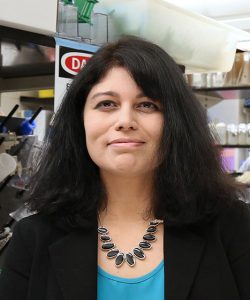
“[The pandemic] caused people’s research projects to slow down. It caused a lot of anxiety for students who wanted to graduate but couldn’t because they needed to complete their experiments,” she said.
But she wanted to keep people safe while maintaining productivity. So, working in April and May, she and her team in the School of Medicine Office of Research devised a detailed document on how School of Medicine researchers could get back to work in June when the OVCR ramped up research on campus. The document outlined a shift system in June and July to allow those who wanted to return to work to do so safely. Instead of a standard 8 a.m. to 5 p.m. workday, the School of Medicine created a morning shift, from 6 a.m. to 2 p.m., and an afternoon shift, from 2 p.m. to 10 p.m. The 29-page document outlined guidelines for how everyone could work safely and perform both lab-based research and human-subject research.
“Over the summer, we kept the density of each lab, each floor and each building less than 50%,” she said. “At the end of July we realized that the initial plan was working extremely well and so in August, we created additional flexibility by relaxing the shift windows so that people could design their own hours while still maintaining the physical distancing requirements in the School of Medicine buildings of one person per every 200 square feet.”
The guidelines recommended that everyone monitor their body temperatures daily before leaving home to return to campus. Back in the summer, “a lot of people had allergic symptoms,” Damania recalled. “We were very strict in telling people to just work from home and not to step out of the house if they had even one symptom. Keeping our campus safe for workers was more important than missing a couple days of work because you had a sore throat.”
The researchers use microscopes, spectrophotometers, tissue-culture incubators and other equipment. “Each person wipes down the equipment, and then the next person comes in, wipes it down again and uses it,” she says. Today, we have close to 100% of people back at work and each lab group has made shifts that work for them while maintaining our mandated physical-distancing principles.
“I really do believe that it’s safer to come into work than to go to a grocery store, especially back in June when many stores did not have mask mandates,” Damania said.
“Things are slower these days compared to pre-COVID times, but I think this is the new normal, and it’s better to be safe and go slow than try to do more and risk having to ramp down research again.”
And it has kept the University’s largest single research unit going without a single case of researcher-to-researcher coronavirus transmission in any of the School of Medicine’s buildings since the guidelines were put in place. The UNC School of Medicine employs over 1,000 faculty researchers, plus students, fellows and staff, and brings in more than half a billion dollars each year, over half of the annual total research funding for campus.
“I’m pleased by how successful we have been in ramping up research after the shutdown. People have risen to the challenge,” Damania said “All our labs are happy that they can come to work and be productive and feel like they’re moving forward on their projects, which will help them move forward in their careers.”
Damania’s biggest message? The data are clear that masks can protect us.
“Masks keep the economy going. They keep the University going. They keep our research going,” she said. “And it’s easy to wear a mask. It may not be what you want to do for the rest of your life, but it’s not harming you in any way. And, most importantly, wearing masks allows us to keep moving along making discoveries and finding new treatments for human disease. It allows us to be a productive society.”
Other research, other challenges
Not all research at Carolina takes places in wet labs or medical clinics. The fallout from the pandemic impacted the Carolina Population Center’s roughly 300 researchers — fellows, pre- and postdoctoral scholars and staff — in different ways. Much of the CPC’s work involves data collection and computational work. And, yes, it was relatively easy to translate that work from the Center’s Carolina Square offices, where researchers traditionally maintain offices and collaborate in eight conference spaces, to remote locations.
The CPC’s IT department had about 10 days to prepare users for remote work before the official “shift to remote work” decision in mid-March, said Tim Van Acker, CPC deputy director for research services.
“At this particular time in our history, as long as you have access to the internet, you can access the remote compute servers to continue doing your analysis,” he said. In fact, of the 17 programmer/analysts, as well as the trainees and fellow who use the CPC remote compute serves, all were able to continue working unimpeded, “as long as they have an internet connection and a quiet place to be able to concentrate.”
But remote work isn’t ideal. The CPC is meant to be a place where 71 faculty members from a variety of schools and departments on campus can come together and do collaborative research across their disciplines. The CPC offers them office space and a central computer platform for sharing data. They conduct research on population, health, aging and the environment and share data and findings that push the field forward and train the next generation of population scholars.
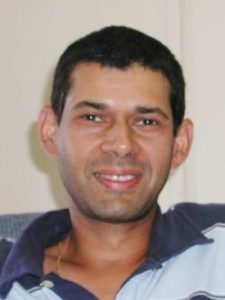
“All of that changed on March 17,” Van Acker said. “It got flipped on its head overnight.”
Other challenges emerged last spring. Travel restrictions, for one; a lot of the CPCs research happens internationally.
Sudhanshu “Ashu” Handa, Kenan Eminent Professor in UNC Public Policy in the College of Arts & Sciences, is co-principal investigator of The Transfer Project, a regional initiative with UNICEF and FAO to understand the broad effects of government-sponsored cash transfer programs in sub-Saharan Africa. The economist was preparing to leave on a spring data-gathering trip to Malawi when the pandemic grounded him.
The solution? CPC shipped tablet computers to Handa’s colleagues at the University of Malawi in Zomba, Malawi.
“Dr. Handa’s co-PIs are the ones who are now implementing the project in the field,” Van Acker said. “They hired some of their students and staff from the area to do the actual interviews.”
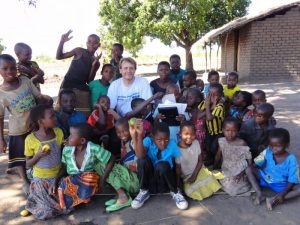
Thriving, safely
Seven months into the pandemic, UNC Research is doing more than making do. By one measure — research funding — UNC Research is having its best year ever. In fiscal year 2019, the University had $1.14 billion in annual research expenditures, but in 2020, which ended in June, it is on track to reach $1.15 billion.
And it’s operating safely. The University has a voluntary research study underway, the Return to Campus COVID-19 Assessment Project for UNC-CH Employees and Trainees, or ReCAPP, which allows anyone in the research population to be tested for the presence of virus and also for the presence of antibodies to the virus to see if they were infected in the past.
“We’re doing incredibly well in the research population,” said Magnuson in mid-September. “We have no evidence of transmission from researcher to researcher on campus to date.”
Meanwhile, researchers at Carolina “are tackling all facets of the pandemic and its impact on society, from basic science to bedside to community resilience,” Magnuson said. “Virtually every school on campus is involved in some form of COVID-related research.”
As the new normal continues, UNC Research will continue leading the way.

By Logan Ward, The Well
